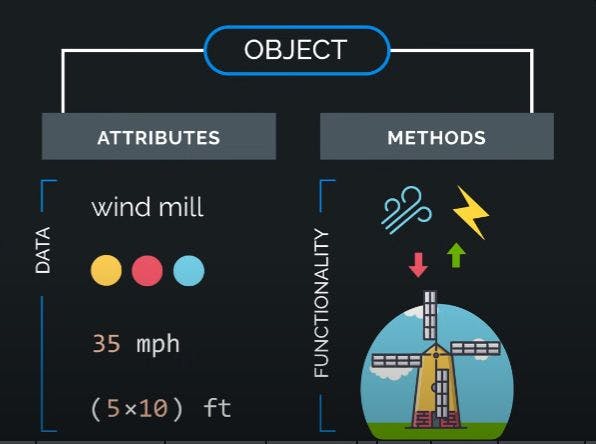How To Not Get Stuck, When Learning On Your Own 📖
...and why YouTube can frustrate you on your way
Many of us here are self-taught. I am learning almost on my own as well. When being self-taught, there is this weird behavior our brain lets us do, that is always standing in the way of progressing.
The Evil Loop
- We get super excited about a new topic and dive into it (Yay, dopamine rush 😅)
- We keep watching 100 video tutorials all directed to beginners including "Programming in 5 minutes", "Learn $programminglanguage in one day", "How to master $language in only one video" etc.
- We feel like we are stuck because we are overwhelmed by all the different input we get.
What's The Problem?
All these videos pretty much do the same. They are directed to beginners. Those who want to have a quick look into a new language and see if they like it. They do not give the viewer a structured plan of how to learn the language. It is a bit like you join a new programming course twice a day and every course is taught by a new teacher and all start from the beginning. This is super frustrating and discouraging.
Why Do We Do This?
Our brain feels most comfortable with doing things it already knows because it uses less energy. If I watch a video about things I learned the day before and understood the warm cozy feeling of "I know how to do that" spreads in me as if I re-watch my favorite TV-Show. But only repeating content, even if it's made by someone else doesn't help me get further in my learning.
How I Fixed It For Myself
Breaking out of that loop is important. One thing I found the most helpful when feeling overwhelmed was having a structure. A structure given that provides me a red line through the learning progress. So I bought a long full-paid course when it was at a discount and now I am using that course as a guideline. When I feel like I don't understand certain things, then - and only then - I go to YouTube and look for that specific topic. I go to documentations and search for the topic. For example, I just recently learned about Classes and Objects in Python. The tutorial in my paid class was okay, a little confusing but also only 4 minutes long. Not long enough for me to grasp the difference and to understand, what they do. So I went to YouTube and found this:
While watching it, she showed this Infographic and that was all I needed for me to make "click."

From that point on I could go back to my paid course and continue from there. It is important to always go back, find the red line again, and put your brain into the uncomfortable situation not exactly knowing what will come next.
Take Your Time For Exercises
My course offers exercises at the end of each chapter. And while it's tempting to watch the whole chapter and then do the two exercises at the end. Once I reach the end, I won't remember how I started.
So as soon as I realize, I do get a little stuck or I do not fully grasp the content of a lesson, I make an exercise out of it. So for Classes and Objects, I did make my own little code example that defines a class and produces objects.
class Cat:
def meow(self):
print(
f"The {self.color} colored cat {self.name}
says meow and eats {self.treat}")
k1 = Cat()
k1.name = "Kitty"
k1.color = "white"
k1.treat = "Bacon"
k2 = Cat()
k2.name = "Bonny"
k2.color = "ginger"
k2.treat = "Pineapple"
k1.meow()
k2.meow()
And after that, I looked for a way to make it more compact.
class Dog:
def __init__(self, name, color, treat):
self.name = name
self.color = color
self. treat = treat
def bark(self):
print(
f"The {self.color} colored {self.name}
says bark and eats {self.treat}")
d1 = Dog("Toby", "pink", "Strawberries")
d2 = Dog("Penny", "white", "Cucumbers")
d1.bark()
d2.bark()
The course itself offered customer databases as an example, but let's be honest. How boring is that? So I freshened it up. Used examples that are playful and tickle my visual thinking.
 Photo by Michael Sum on Unsplash
Photo by Michael Sum on Unsplash
Make Exercises Relevant To You
The ginger cat eating pineapple or the pink dog eating strawberries. Those are images easy enough to be remembered and when I now think about objects and classes, I remember dogs and cats and have a much easier time reconstructing the topic for me.
When a topic is relevant to you and to your interests, then your brain gets excited to know about them. That way you can handle those customer database examples at the end of the chapter like a champ. Just imagine your customers are cats!
Have A Programming-Buddy (Or Two)
This is a big one - even for me. Have a programming buddy that is just as motivated as you. Maybe even join a support group of fellow learners where you talk about your plans and successes and even about the times you get frustrated.
Having someone to learn together with makes learning so much easier. I don't know how often I suddenly found the solution to a problem by explaining the problem to someone else.
And it also helps to hold you accountable for progressing in your lectures. While I was never a big fan of school because it would teach me things I was absolutely not interested in, it did one thing right for me - it gave me a red line of the things I had to learn and in which order, and it provided me with people I could learn with and talk about my problems and frustrations when I didn't understand something. By simulating that for me, I felt just enough pressure to continue, but not enough to burn out on it.
I hope my tricks will help you to continue your learning journey and give you some solutions when you feel stuck. Don't worry - we all have been there!
Title photo by Fotis Fotopoulos on Unsplash

